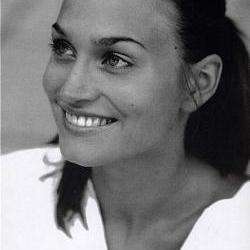Frank Castorf’s Faust production, originally seen at the Staatsoper Stuttgart, in combination with the global pandemic has put the critical press in a unique and bizarre position. The Staatsoper, in a novel attempt to keep opera – and its at-risk audience – alive, streamed the premiere of Gounod’s tragedy live on Thursday evening with only a handful of press delegates in attendance.
Cameramen (Tobias Dusche, Daniel Keller) physically follow the action through the stage, streaming the performers in close-up and revealing action hidden from the audience view. This is contextualised with supplemental scenes – pre-recorded scenes, commercials and news footage – onto screens flanking the action on stage, offering additional layers of commentary. Larger, external cameras are located throughout the hall, while the live physical audience are zoomed out one degree further. The fourth wall is pulverised, not just by the nimble cameramen on stage, but also by the singers – themselves playing roles in an opera/movie/theatre piece – reacting to and acting for the cameras as well as for the audience. The one thing we cannot see from our privileged loge is which of these many perspectives is chosen for the live feed by an invisible, omniscient storyteller (video director Martin Andersson) continuously selecting his footage. This means that the spectacle we are experiencing is not what will be seen by viewers at home, or even by a later physical audience for that matter: it was a reminder that while a performance experience is always personal, during corona it is particularly contingent.
Similarly, Castorf’s production is a many-layered affair. An additive director, he piles quite a bit onto an opera that already stretches its original source to its limits. Gounod’s version, which leaves little more than a love story and a pact with the devil from the Goethe classic, already sits uneasily within a German tradition that more or less mythologised the tale. Castorf goes one further, staging it within a fantastically knotted set (Aleksandar Denić) which manages to unequivocally evoke almost-modern Paris – cafés, churches, a subway and apartments are stacked and squeezed into every square metre, and brilliantly decorated. Rooms and cubbies, both visible to the stage and invisible, are packed with everything from lace and candles to opium pipes and tribal masks.
Marguerite, convincingly sung and acted by Nicole Car, is no chaste and pure spinster, but a bejewelled woman of the world whose relationship with Faust is fairly transactional. If the old Faust, lightly but lyrically portrayed by Juan Diego Flórez, is a scholar, he is the most well-dressed one I have seen (costumes by Adriana Braga Peretzki) and without a book or study to be found. He and Méphistophélès, a house debut for the powerful bass Adam Palka, pal around like buddies; the devil here less diabolical and more anarchistic party-boy. He drops his pinstriped pants early on and drinks, smokes and hangs out in headdresses and cloven hooves... your standard, tattooed Burning Man attendee, complete with black eye makeup. Bertrand de Billy conducted sensitively. Secondary roles were filled solidly, Marthe (Monika Bohinec) a thoroughly seductive character, Valentin (Ètienne Dupuis) woodenly rigid in his condemnation of his sister, Martin Häßler a solid if forgettable Wagner and Kate Lindsey the standout as an unabashedly female Siébel.
And what is the production all about? Bottomless, common political, social and cultural critique, particularly, capitalist consumerism – Coca-Cola logos and flags are waved, and everything that is not shabby is gaudily glitzed and glamoured – ostensibly with the message that consumption makes us soulless, though maybe so do tired platitudes at a certain point? Regardless, texts by Arthur Rimbaud, critiquing mercantile democracy, haunt the evening, and political war-mongering, imperialism, social constructs of morality are all thematicised. The setting is post-war Paris, at the time of the Algerian War (so around 1960) when France's colonial might had crumbled, but is also somehow about the struggle for democracy a hundred years prior – about the time of the opera's creation – and about more recent imperialist delusions, with a warmongering chorus holding severed heads. The question at the end of the evening is: how much text is too much text? How many screens of information, how many layers of reference can we take in before any sense of cohesion or narrative is lost in the shuffle?
Yet regardless of where the public or critical opinion of this production lands in Vienna, the experience itself – an awareness of being nearly crushed but also fascinated by the process of shifting through these layers of media, meaning, portrayals, commentary, context and how they interact – is certainly thought-provoking. Hats off to the Staatsoper for finding a truly novel way to present Faust in the time of corona. This was unforgettable.
Chanda VanderHart was invited to attend the recording premiere at the Wiener Staatsoper as a member of the press.




